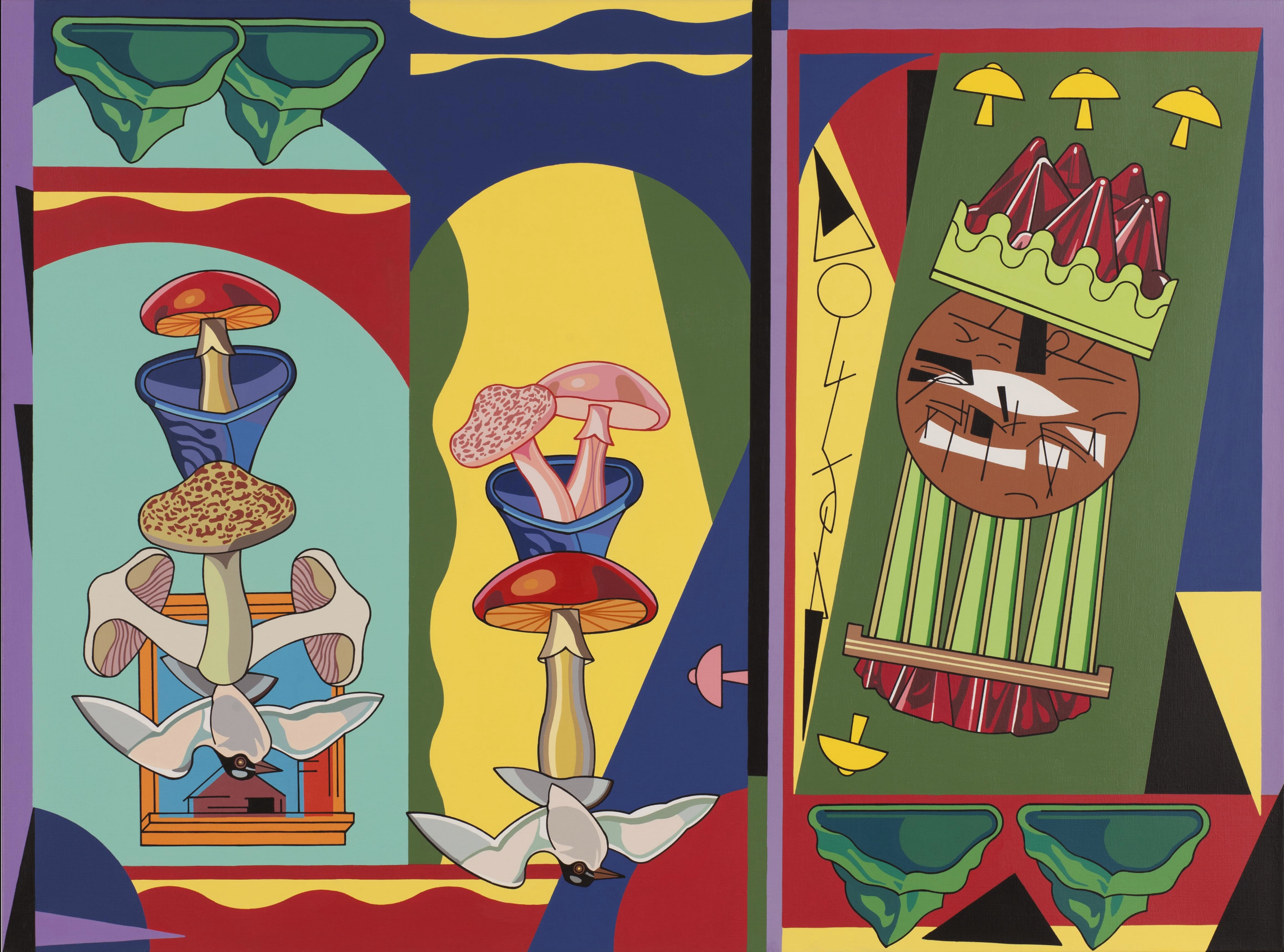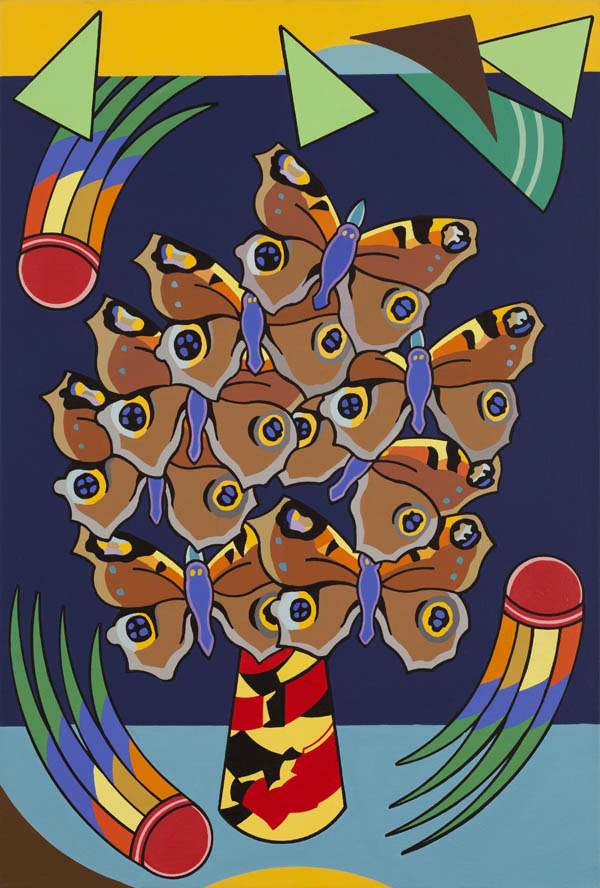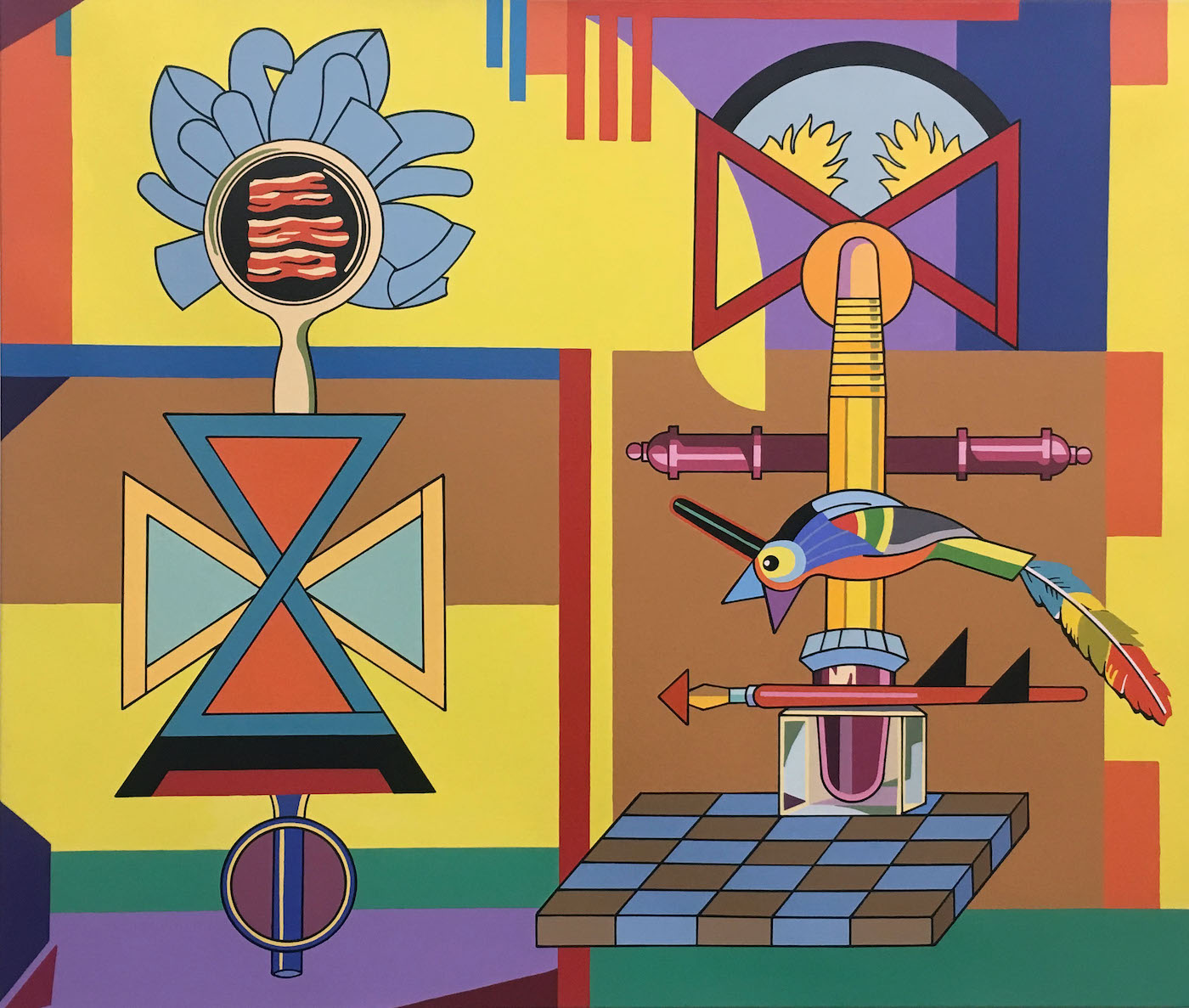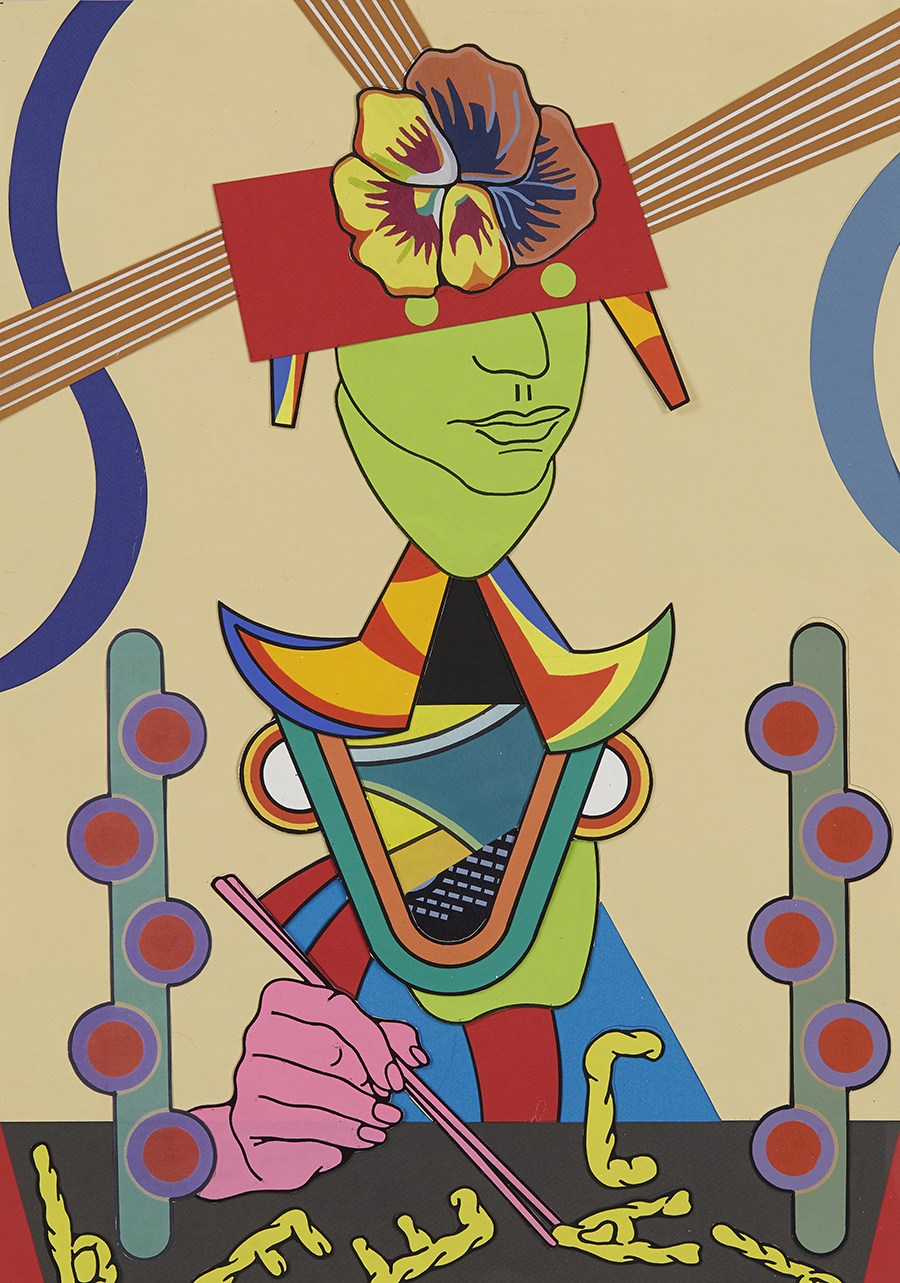trevor winkfield
︎Artist, Painting, Surrealism, Abstract
︎ Ventral Is Golden
trevor winkfield
︎Artist, Painting, Surrealism, Abstract
︎ Ventral Is Golden
︎ Ventral Is Golden
“I wrote because I didn't know how to paint the paintings I wanted to paint”.
- Trevor Winkfield


Born in 1944 and educated in Leeds (Uk), Winkfield describes his early artistic vision as emanating from the dreary landscapes of bankruptcy in 1950's England, where after the war, everything felt run down and all the houses needed paitning.
Initially inspired by the encoded symbolism of heraldry, Winkfield stated that the city of Leeds’ official coat of arms (depicting a blue shield displaying a golden fleece suspended from a belt being held on either side by owls wearing ducal coronets) was a pyramid of nonsense, who’s secret language instinctively made him want to emulate the same kind of symbolism in his crayon drawings as a young boy.
Lured into the fascinatingly cryptic world of heraldry, with it’s own exotic terimnology - azure, couchant, gorged, engrailed, chevron, fess, shakefork, and so on, Winkfield became fascinated with symbolist artists such as poet Raymond Roussel, describing his works as a “perfectly preserved temple of a cult which has disappeared without a trace... we can still admire its inhuman beauty, and be stirred by a language that seems always on the point of revealing its secret.”
Influential Dadaist, Kurt Schwitters also played a formative role in Winkfield’s creative development. Most notably (he remarks in his interview with The Weekly Standard) as a fourteen year old boy, Winkfield undertook ‘mini pilgrimages’ (often to see single pieces of artwork), by travelling to the Lake District for example (after seeing a newspaper clipping on a friend’s fridge), to visit the unfinished Merzbarn of the afore mentioned DADA artist.
Initially inspired by the encoded symbolism of heraldry, Winkfield stated that the city of Leeds’ official coat of arms (depicting a blue shield displaying a golden fleece suspended from a belt being held on either side by owls wearing ducal coronets) was a pyramid of nonsense, who’s secret language instinctively made him want to emulate the same kind of symbolism in his crayon drawings as a young boy.
Lured into the fascinatingly cryptic world of heraldry, with it’s own exotic terimnology - azure, couchant, gorged, engrailed, chevron, fess, shakefork, and so on, Winkfield became fascinated with symbolist artists such as poet Raymond Roussel, describing his works as a “perfectly preserved temple of a cult which has disappeared without a trace... we can still admire its inhuman beauty, and be stirred by a language that seems always on the point of revealing its secret.”
Influential Dadaist, Kurt Schwitters also played a formative role in Winkfield’s creative development. Most notably (he remarks in his interview with The Weekly Standard) as a fourteen year old boy, Winkfield undertook ‘mini pilgrimages’ (often to see single pieces of artwork), by travelling to the Lake District for example (after seeing a newspaper clipping on a friend’s fridge), to visit the unfinished Merzbarn of the afore mentioned DADA artist.


Winkfield's ability to rearrange the dreary social milieu into contemporary medieval pomp and seemingly nonsensical ritual, draws somewhat on his exotic fascination with the faded colours of cheaply printed Egyptian reliefs that were available to him in Leeds city library, set against the backdrop of austere and pointless traditions that occupied suburban life.
“Another thing that had an enormous visual impact upon me was Queen Elizabeth’s coronation in 1953” remarked Winkfield. “An incredible medieval pageant full of purple, red, gold, and silver... people gingerly passing parts of the regalia back and forth and moving very slowly. A lot like Assyrian reliefs or Egyptian wall paintings, as though every act was a ritual.” (BOMB Magazine)
After moving to New York in 1969, Winkfield became involved with writers, poets, and other painters, including John Ashbery, producing translations of Roussel’s work, as well as collaborative poetry books such as ‘Faster Than Birds Can Fly’.




It can be quite a difficult feat to analyse the work of Winkfield without the use of ordinary descriptive language somehow falling short. I would go as far as making up the word 'mechaniclysmic' in an attempt to do this. Mechanical cataclysms, that is to say an eruption of natural and technological energies that seek to formulate a coherent idea by merging through disparate planes. A kind of tectonic dinner plate, piled high with visual data portions cooked in the absurd.
Winkfield once said about the spontaneity of the creative process that, "I overheard two people talking, one telling the other, “You should use more blue,” so of course I went ahead and made some blue paintings shortly thereafter. The moral is: always leave your studio window open."
If there is one thing to take from these paintings, it is that they often contain the sense of ritual, much like the Egyptian reliefs from which they were partly inspired. However, in his own works, Winkfield knew not what the rituals were necessarily for, nor what they represented. and this in some ways prevented the ritual from becoming institutionalised, or given over to an impenetrable ideology. As what is ritual without meaning but an exploration of relief itself. To carve curiosity deftly from the flatness of the world.
“The moral is: always leave your studio window open."
Winkfield once said about the spontaneity of the creative process that, "I overheard two people talking, one telling the other, “You should use more blue,” so of course I went ahead and made some blue paintings shortly thereafter. The moral is: always leave your studio window open."
If there is one thing to take from these paintings, it is that they often contain the sense of ritual, much like the Egyptian reliefs from which they were partly inspired. However, in his own works, Winkfield knew not what the rituals were necessarily for, nor what they represented. and this in some ways prevented the ritual from becoming institutionalised, or given over to an impenetrable ideology. As what is ritual without meaning but an exploration of relief itself. To carve curiosity deftly from the flatness of the world.






Collage as Painting, exhibition
All Our Perverse Pleasures, The Booklyn Rail
An Interview with Winkfield, Bomb Magazine
Video Interview with Trevor Winkfield